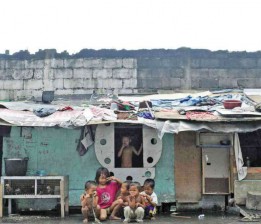MANILA, Philippines—The economic pie is growing, but “will more people get a slice of the pie”?
Malacañang is happy over the news that the Philippines is now the main economic engine of Southeast Asia but of more concern to the Aquino administration is that all Filipinos profit from that economic success.
“If you compare the economy to a pie, we are very pleased that international media, and also ourselves, recognize that the pie has grown. We’re happy that the pie has grown bigger. But it’s also important for us to ensure that more people get a slice of the pie, that’s what we call inclusive growth,” said presidential spokesperson Edwin Lacierda.
That’s why President Aquino emphasized in his state of the nation address “the various ways of achieving growth and making sure that all of our population, or all of our citizens will hopefully profit from that growth, or get a slice of the pie,” he said.
S&P upgrade
In a forecast last week, the Standard & Poor’s (S&P) rating agency, which recently upgraded the country to investment grade, said that the Philippines has taken over the growth leadership role in the Association of Southeast Asian Nations Nations (Asean) from Indonesia.
It projected Philippine gross domestic product (GDP) to expand by almost 7 percent this year, moderating to 6-6.5 percent in 2014 and 2015.
The Philippines’ stellar growth has been fueled by strong domestic demand compared to sluggish forecasts for the rest of the economies in Asia and the world.
Ahead of neighbors
S&P said Indonesia, Malaysia, Philippines, Singapore and Thailand are expected to grow collectively by 5.5 percent this year, faster than the rating firm’s 5.3-percent growth forecast for the Asia=Pacific as a whole.
S&P said the Philippines would stay ahead of its neighbors in the region, given its lowest reliance on exports compared to others in Southeast Asia.
S&P’s growth forecast for the Philippines this year matched the top end of the government’s target growth rate of 6 to 7 percent.
The President’s economic managers carried the “economy’s-growing-but-who’s-enjoying-it” theme to the House of Representatives where they painted a generally rosy picture of the economy to the representatives who began formal deliberations on the proposed budget for 2014 on Wednesday.
The theme of the presentations made by the Development Budget Coordination Committee (DBCC) was the need to ensure “inclusive growth” through projects outlined in the proposed budget and expenditure program.
“Economic growth is necessary but not sufficient for poverty reduction,” Director-General Arsenio Balisacan Jr., the socioeconomic planning secretary and head of the National Economic and Development Authority, told the committee on appropriations.
“We need to do more to attain inclusive growth. Not only do we need to accelerate infrastructure development and enhance our development in human capital, we also need to give importance to the sectoral and geographical dimensions to ensure that our growth strategy benefits the greatest number of our people,” he said.
On track
Balisacan said the country was “on track” to achieving rapid growth, with the DBCC setting the growth target at 6.5 to 7.5 percent next year.
“The present challenge is to improve the social indicators, particularly on job creation and poverty reduction,” he said.—With a report from Paolo G. Montecillo
RELATED STORY
Gov’t execs admit economic growth not enough to reduce poverty


